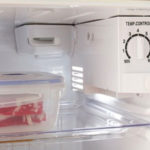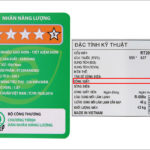With the arrival of summer, a range of household cooling devices will be more sought after than ever. In addition to air conditioners, fans are considered to be cheaper, easier to buy, and easier to use. Currently, the fan market offers various types for buyers to choose from based on their personal needs, such as standing fans, desk fans, wall-mounted fans, handheld fans, and ceiling fans.
Among all types of household fans, ceiling fans and standing fans are the most popular. Specifically, ceiling fans have a large size and unique installation and usage characteristics. They are mounted on the ceiling without a fan cage. When in operation, the large fan blades rotate, generating wind to cool the entire space.


Ceiling fans and standing fans are two popular types of fans
On the other hand, standing fans are designed in the form of a tree and can stand independently on the floor. The structure of a standing fan usually includes fan blades for cooling, a fan cage for blade protection, and a control system.
In addition, standing fans have the advantage of adjustable wind direction. Users can adjust the fan wind to focus on a specific point or circulate the wind around the room by activating the oscillation mode.
When faced with choosing between these two types of fans, many users question which one consumes more energy.
Comparison chart from expert research
Many people assume that ceiling fans, with their large size, naturally consume more electricity than standing fans. However, this belief is not accurate. According to information from experts at well-known electrical stores such as Dien May Xanh, Nguyen Kim, and Media Mart, it cannot be definitively stated that all ceiling fans consume more energy than standing fans or other types of fans. The amount of electricity consumed depends on the power rating of the fans.
The power rating not only determines the amount of electricity consumed by a fan but also affects its cooling effectiveness at different levels.
An Ecocostsaving.com article reveals that a recent market study on 200 energy-saving ceiling fans showed an average power rating of around 31W – 100W, depending on the fan speed. Thus, if used in the United States, users would need to pay at least 0.0004 USD, equivalent to nearly 1000 Vietnamese dong per hour, to run a large ceiling fan.
In addition to ceiling fans, this study also provides power rating figures for other types of fans, making it easier for users to compare. According to the study, standing fans have power ratings ranging from approximately 44W – 110W, while desk fans have power ratings ranging from 17W – 110W.

Comparison chart based on a survey of 200 different fans from Ecocostsaving.com
From these figures, it can be seen that ceiling fans do not consume more electricity than standing fans as many people mistakenly believe. The electricity consumption of both types of fans is equivalent. In fact, in some cases, ceiling fans are even more energy-efficient. However, due to their long and wide fan blade spans and the need for installation on the ceiling, ceiling fans may not be suitable for every type of space.
When to choose a ceiling fan or a standing fan?
The choice between a ceiling fan and a standing fan for cooling in the summer should be based on two important factors: the room size and the number of people. Ceiling fans with blade spans around 1.2 – 1.5 meters are suitable for large, spacious spaces measuring at least 3 meters or more. Ceiling fans provide strong and widespread cooling, optimizing the cooling effect for the entire space.
On the other hand, standing fans are suitable for smaller spaces. Although they can oscillate to spread the wind, their coverage area is relatively small. The advantage of standing fans is their ability to focus the cooling on a fixed position, making them ideal for spaces with few occupants.

Ceiling fans effectively cool large spaces with many people
In addition to standing fans, for personal cooling or small spaces, households can also consider box fans, desk fans, or wall-mounted fans. These types of fans provide cooling efficiency similar to that of standing fans, although the distribution of wind may not be as even due to the revolving feature in standing fans.
Selecting the appropriate fan based on needs and usage purposes helps save energy and optimize the cooling effect of the device. For example, in a large room or hall with many people, the best solution would be to use a single ceiling fan instead of multiple standing fans. On the other hand, in a small space with only 1-2 people, a standing fan should be used to avoid wasting electricity.

Standing fans are suitable for small rooms with few occupants
When using a fan, users can also consider the following tips to save even more electricity:
– Limit the simultaneous use of supplementary functions such as ionizers, misting, fragrance dispensers, indicator lights, etc.
– Use the timer feature when running the fan for extended periods or overnight.
– When not using the fan, unplug it completely rather than just turning it off with a switch or remote control.
– If the fan shows signs of damage or is too old, consider replacing it with a new fan.
– Prioritize selecting fans with higher energy star ratings.
Source: ttvn.toquoc.vn
Maximizing Durability and Energy Efficiency with High-Speed Kettles: Tips and Advice
Are you an electric kettle aficionado? If so, you’ll appreciate Ði?n máy Xanh’s latest offering. We’ve compiled comprehensive instructions to help you make the most of your electric kettle, including tips on how to prolong its life as well as maximize energy savings. Let’s get your kettle expertise up to date!



































